We catch up with Fashion for Good’s Managing Director Katrin Ley following AFC’s visit to the global initiative’s hub in Amsterdam earlier this June. Hear about their Innovation Platform with accelerating and scaling programmes, The Good Shop and the Fashion for Good Experience; the world’s first interactive Museum for sustainable fashion innovation...
We catch up with Fashion for Good’s Managing Director Katrin Ley, following AFC’s visit to the global initiative’s hub in Amsterdam earlier this June. Hear about their Innovation Platform with accelerating and scaling programmes, The Good Shop and the Fashion for Good Experience; the world’s first interactive Museum for sustainable fashion innovation...
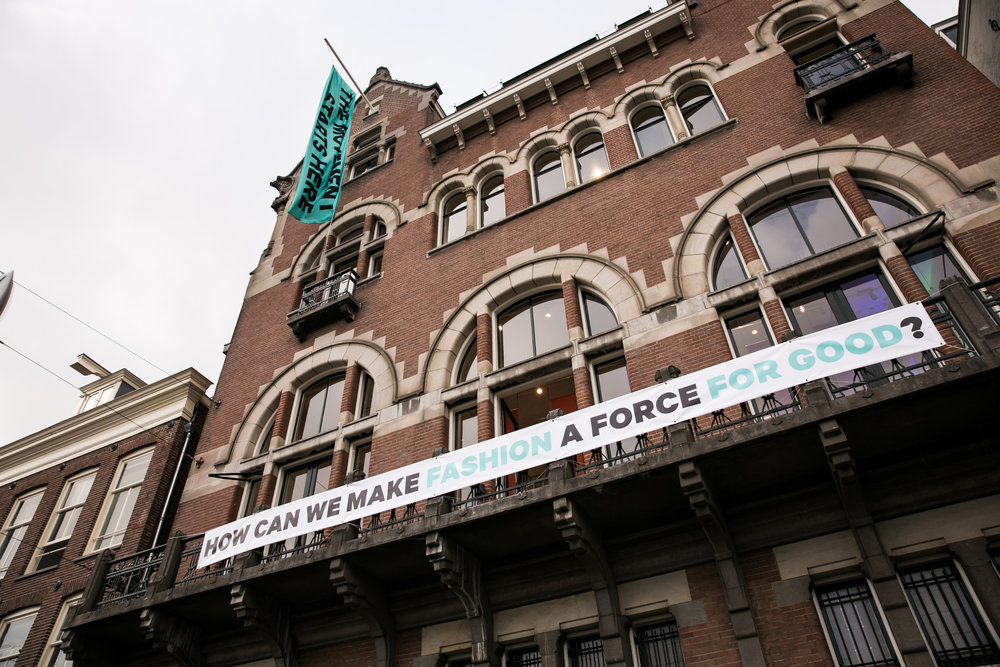
TELL US A LITTLE ABOUT YOUR OWN INDUSTRY BACKGROUND AND WHAT BROUGHT YOU TO ‘FASHION’?
For many years I worked in the apparel and footwear industry, both on the strategy consulting side as well as the corporate side. And for the last couple of years, I was in the world of impact investing, investing in early stage startups with circular ambitions.
The path that led me to Fashion for Good wasn’t that clear cut, and the career choices I made didn’t seem to connect for a while. I became more and more aware of the problems and challenges that face the fashion industry — the need for change as well as the potential solutions and innovations that exist.
By joining Fashion for Good, dots that previously seemed unconnected now connect – I am able to bring together the corporate apparel and footwear world, the startup world and the investment world, with meaning.
_
HOW HAVE YOUR PERSONAL VALUES SHAPED YOUR CAREER AND LEAD TO YOUR CURRENT ROLE AT FASHION FOR GOOD?
“You've got to find what you love,” Steve Jobs famously said. And for me, Fashion for Good is just that. I trusted my gut and my desire to make an impact and contribute to society. The fact that my daughter was born around this time furthered this desire and made me reflect on the idea of purpose and leaving behind a legacy for future generations.
_
‘SUSTAINABILITY’ IS A BROAD TERM AND CAN MEAN DIFFERENT THINGS FOR DIFFERENT PEOPLE. WHAT DOES IT MEAN TO YOU?
There needs to be a robust definition of what ‘good’ is — an aligned vision as the starting point for change that every single part of the global fashion supply chain can be inspired by and aspire to.
Holistically, we view sustainable under the framework of a circular system.
Fashion for Good judges materials and textiles on the basis of the Five Goods Cradle to CradleTMframework, the guiding principle of all Fashion for Good initiatives. Looking at how sustainability is integrated across the whole supply chain of a good or product.
Drawing from the Cradle to Cradle™ framework, Good Fashion is not fashion that simply looks good or is mostly good; it is good in five important ways:
Good Materials – safe, healthy and designed for reuse and recycling and follow cradle to cradle principles. Materials are returned to the biosphere in the form of compost or other nutrients, from which new materials can be created.
Good Economy – growing, circular, shared and benefiting everyone
Good Energy – renewable and clean, • Reduction in MW/h of energy consumption Increase in MW/h of energy from renewable sources, Associated reductions in CO2 emissions
Good Water – clean and available to all, • Reduction in cubic metres of H2O consumption
Good Lives – living and working conditions that are just, safe and dignified. Fair jobs created, Workers paid living wage, Empowerment trainings conducted.

HOW DID FASHION FOR GOOD COME TO BE?
We started looking at the fashion industry and the challenges that this industry faces and realised that business as usual doesn’t work to address these size of those challenges. It really requires innovation, and innovation at scale, to address those challenges. That’s the core idea - to create collaborative innovation by bringing brands, manufacturers and retailers together with the start-ups, and then help them grow.
With C&A Foundation as a founding partner, and building on our co-founder William McDonough’s philosophy of Cradle to Cradle™, Fashion for Good was established as a global, collaborative innovation platform to tackle the problems faced by the fashion industry.
In nutshell, the fashion industry has a tremendously complex and opaque value chain. That is facing a fundamental redesign requirement under huge consumers scrutiny and cost pressure. The biggest challenge therefore is for all these actors to collaborate in the pre-competitive mindset.
Therefore, we are trying to get the entire fashion industry together to collaborate so we can drive systematic change through innovation.
_
FOR THOSE UNFAMILIAR WITH THE ORGANISATION, WHAT DOES FASHION FOR GOOD DO?
Fashion for Good is the global initiative that is here to make all fashion good. We are a global platform for innovation, made possible through collaboration and community. We work closely with our corporate partners to select the most promising startups globally.
At the core of Fashion for Good is an Innovation Platform, which includes:
Accelerator Programme: gives promising start-up innovators the funding and expertise they need in order to grow.
Scaling Programme: supports innovations that have passed the proof-of-concept phase. A dedicated team helps them scale by offering bespoke support and access to expertise, customers and capital.
Our Good Fashion Fund will catalyse access to finance to shift at scale to more sustainable production methods.
Fashion for Good also acts as a convener for change. In October 2018 the Fashion for Good Experience has opened: the world’s first interactive tech museum dedicated to sustainable fashion innovation, where we inspire, educate and engage people from across the world. Visitors learn about the past, present and future of the fashion industry and with the digitally-enabled Good Fashion Journey and an RFID bracelet, they can discover and commit to ways that they can make a difference. At the end, they take home a personalised Good Fashion Action Plan, a digital guide filled with tips for extending what they learned in the Experience into their daily lives.
In its hub in Amsterdam, Fashion for Good also houses a Circular Apparel Community co-working space, creates open-source resources like its Good Fashion Guide about cradle-to-cradle apparel.
_
WHAT IS THE LONG TERM VISION FOR THE ORGANISATION?
Fashion for Good is a global initiative that reimagines how fashion is designed, made, worn, and reused. Through innovation and practical action, we demonstrate a better way for the fashion industry to work that allows companies, communities, and our planet to flourish.
Our ambition is to make all fashion good – to drive systematic change through innovation and collaboration.
_
WHO IS BEHIND IT? TELL US A LITTLE ABOUT THE TEAM & EXPERTISE INVOLVED?
Fashion for Good was established as a global, collaborative innovation platform to tackle the problems faced by the fashion industry, with C&A Foundation as a founding partner, and building on co-founder William McDonough’s philosophy of Cradle to Cradle™.
Fashion for Good’s programmes are supported by founding partner C&A Foundation and corporate partners adidas, C&A, BESTSELLER, Galeries Lafayette Group, Kering, Otto Group, PVH Corp., Stella McCartney, Target and Zalando, and affiliate partners Arvind and Norrøna.
Fashion for Good is an international team of industry professionals with expertise in the fashion value chain; Raw Materials, Dyeing and Finishing, Cut-Make-Trim, Retail, End-of-Use and Transparency and Traceability. Also we have deep investment expertise in the team to allow to also help the innovators with their fundraising activities and connections to investors and funders worldwide.
_
WHO ELSE IS DOING THIS? HAVE YOU SEEN SIMILAR MODELS IN OTHER COUNTRIES OR INDUSTRIES?
Fashion for Good is a pioneer of collaborative innovation in a pre-competitive space.
We’re unique in that we bring together the entire fashion ecosystem, specifically convening brands, retailers, suppliers, non-profit organisations, innovators and funders to innovate and collaborate for Good Fashion. Through our innovation scouting and screening services, we provide for centralised landscaping that facilitates that collaboration and allows to de-risk, pilot and scale innovations with a focus on practical action.

TELL US ABOUT FASHION FOR GOOD’S INNOVATION PLATFORM PROGRAMMES?
Our Innovation Platform gives innovators access to markets, expertise, and finance; all with the ambition to help them scale.
For early-stage innovators, the Accelerator Programme provides opportunities to test their concepts with corporate partners, access early financing, and benefit from mentoring from industry experts.
For late-stage innovators, the Scaling Programme provides deeper coaching, bespoke fundraising support, and hands-on guidance with pilots.
We scout innovative companies with the potential to disrupt the current apparel and textile value chain, bringing a positive environmental and/or social impact. In particular, we are seeking startups that address challenges in the following areas:
Raw Materials
Dyeing & Finishing
Manufacturing
Retail
End-of-Use
Transparency & Traceability
These innovations can be anything that challenge us to rethink every step of how a product is made. Materials made from food waste. Business models designed for renting and reselling. Technologies that “close the loop” so that old clothes can be turned into new ones. Because doing good is not simply doing less bad; it is about creating technologies and systems that actively benefit us all. These innovations and many more are promising because they fundamentally change the way we do business, creating an opportunity for a regenerative closed loop system that eliminates waste.
The selection process is conducted alongside our Corporate Partners and we evaluate applications on several objective criteria such as: Impact, scalability, team, business viability.
We offer selected innovators:
Intensive three-month (Accelerator) or up to eighteen months (Scaling programme) programme with no fees and no equity required
Targeted introductions to industry leaders, brands, retailers and manufacturers, as well as the global Fashion for Good-Plug and Play network
Connections to our investor network and potential access to funding
Dedicated mentors with innovation and sustainability expertise within fashion, retail and beyond
Free office space, working alongside other innovators at our Amsterdam hub
_
HOW DO THE ACCELERATOR AND SCALING PROGRAMMES WORK TOGETHER?
Typically, successful candidates for the Scaling Programme have first gone through the Accelerator Programme and have demonstrated traction with fashion brands through pilots or investments, and / or have raised considerable funding.
(The Scaling Programme aims to drive the growth and adoption rate of selected innovators. We support innovations that have the potential to change the fashion industry for good and that have passed the proof-of-concept phase, with a dedicated team that offers bespoke support and access to expertise, customers and capital.)

_
THE ALUMNI LISTS FOR BOTH PROGRAMMES ARE VERY IMPRESSIVE! WHAT ARE SOME OF THE MOST EXCITING IDEAS AND/OR BUSINESS MODELS THAT YOU HAVE SEEN COME THROUGH?
The Organic Cotton Traceability Pilot with Bext360, the lead technical partner of the initiative and an Innovator in our Scaling Programme, is one such example. This ground-breaking pilot towards successfully tracing organic cotton through the supply chain from farm to store, is truly unique in its multi-stakeholder nature — partnering with Fashion for Good, C&A Foundation, and the Organic Cotton Accelerator (OCA), as well as Kering, Zalando, PVH Corp., and C&A, and supported by technical partners Haelixa, Tailorlux, and IN-Code Technologies, with ongoing field trails carried out in Pratibha Syntex farm groups in India.
Within each area of the supply chain, there are great opportunities for innovation, and we have seen great progress with the innovators since the have started to join our programmes.
For raw materials, innovators working with new materials that can replace standard ones; for instance Mango Materials that transforms waste gas streams into ecofriendly, biodegradable materials that can be used in standard equipment found in factories throughout the fashion industry; or Spinnova, which has developed a disruptive cellulose fibre innovation; turning wood pulp directly into yarn, and involves no dissolving or other complex chemical processes; or Algalife which unlocks the power of algae, creating dyes and fibres from micro algae.
For textile dyeing, we see various new technologies that reduce the use of water and harmful chemicals (e.g. ColorZen, Nature Coatings). Colorifix for instance, dyeing using synthetic biology - Stella McCartney has just done a dress with them which is now exhibited in our new Experience in Amsterdam. At the cut-make-trim stage, there is great potential for solutions built around automation and 3D printing (e.g. SoftWear Automation).
We are also very excited about our partnerships with chemical recycling innovators (e.g. Worn Again, The Infinited Fiber Company, Ambercycle and Tyton Biosciences) that are working hard to make the efficient recycling of blended textiles a reality. These innovations are really promising because they truly, fundamentally change the way we do business, and they create an opportunity for a closed loop system that eliminates waste.
Finally, circular business models (rental, re-commerce, subscription) such as Yerdle, Renewal workshop, stuffstr are taking off and commercial adoption is already occurring. Circular business models have the potential to fundamentally change the commercial incentives of the fashion industry, shifting them from a focus on volume to an industry that is motivated by quality and durability.
In total, we now have over 70 innovators in our programmes, catalysed funding in excess of €74 million; have more than 40 concrete pilot / implementation projects and we have seen substantial TRL improvements in our innovator base. Bear in mind: innovation from lab to scale takes time; specifically if it is “deep” or “hard” tech like raw materials or recycling (vs soft tech – like digital models) E.g. it took Lycra 20 years to reach commercial [i] scale and Tencel more than 30 years to reach commercial production capacity[ii]. With the focus that we and the industry is putting against those sustainable / circular innovations now, we expect this time to be shortened – but it still takes a systemic orchestration of brands, innovators, supply chain partners and investors to drive this adoption; which is hard work.
_
HAVE YOU HAD ANY AUSTRALIAN BUSINESSES COME THROUGH THE PLATFORM?
Australian based Good on You is a mobile app that provides ethical ratings for about 1,000 fashion brands rated on their impact on people, the planet and animals. It is built on a robust brand rating system which aggregates standards, certifications and publicly available data sources into a simple, accessible 5-point score to promote transparency across the fashion industry and to allow customers to make conscious purchasing decisions.
We are a global platform working with disruptive innovators from around the world. We offer the ultimate 12-week programme for startups driving innovation in sustainability, circularity and transparency in order to make all fashion good. Innovators can apply to join the free programme through our website.
_
YOU’VE RECENTLY LAUNCHED THE SOUTH ASIA INNOVATION PROGRAMME FOCUSED ON INDIA AND SRI LANKA, WHAT WAS THE REASONING BEHIND TARGETING THIS REGION? WHAT ARE YOU HOPING TO ACHIEVE THROUGH THIS PROGRAMME?
South Asia is a global leader in manufacturing and one of the largest consumer markets for fashion. The rapidly growing region presents significant opportunities to create value and impact both socially and environmentally from a transition towards a circular economy. With a rich heritage in textile manufacturing and production, Fashion for Good is seeking to spark and scale promising innovations from this region that have the potential to disrupt the current fashion supply chain worldwide.
We’re looking for innovative start-ups from across South Asia with disruptive sustainability solutions applicable to the fashion supply chain. Of particular interest are the unique perspectives of home-grown innovators focusing in key areas including raw materials, dyeing and finishing, manufacturing, retail, end-of-use and transparency and traceability. Fashion for Good is actively working on scaling innovations in the region, by catalysing collaborative pilots, which address areas such as making organic cotton traceable and solutions for the treatment of waste water from the apparel manufacturing process.
Also, with our Asia Programme, we would like to even more so engage manufacturing partners. In order to scale innovations, the strong involvement of the whole supply chain is needed: (global) brands, manufacturers, innovators and funders.
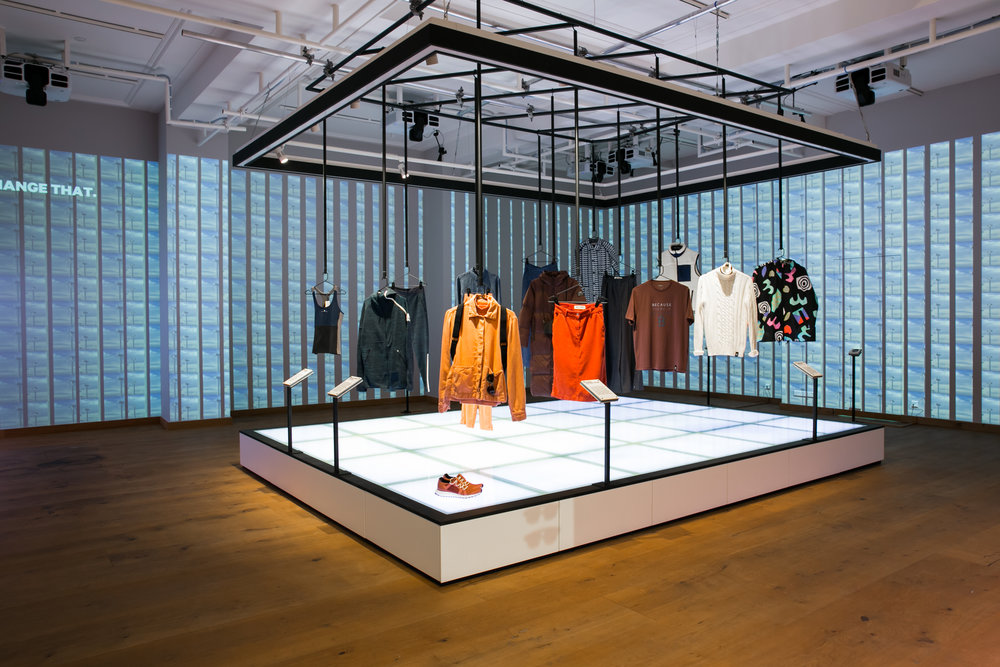
WHEN IT COMES TO CIRCULARITY IN FASHION, WHO ARE SOME INDUSTRY LEADERS THAT YOU LOOK TO?
Leaders – are pioneers – who have implemented the core of the sustainability activities, expand this to scale and now work on unlocking next level. To change the fashion industry, you not only need brands and retailers. Manufacturers, consumers, investors and governments are as important. We need those pioneers who work on innovation and collaborate.
Looking at our own founding partners C&A Foundation as well as our corporate partners; adidas, C&A, BESTSELLER, Galeries Lafayette Group, Kering, Otto Group, PVH Corp., Stella McCartney, Target and Zalando – those are all pioneers in circular fashion, initiating collaborations with innovators across the fashion value chain, in practical and collaborative pilots and explorations of new, sustainable innovations.
Implement “good fashion” has to do with innovations; and this means not only working with startups, but you can also implement good fashion in the here and now. I.e. it is possible today. One such example includes C&A who are the world's biggest organic cotton buyer, and we have worked with them to release the world’s first Cradle to Cradle GOLD certified T-shirts and denim jeans. Together we developed an open sourced document detailing the learnings along the process which we shared with the entire fashion eco-system.
_
YOUR CIRCULAR APPAREL COMMUNITY HUB IS REALLY EXCITING. WHAT ARE SOME OUTCOMES YOU’VE SEEN EMERGE BY HAVING THESE LIKE MINDED ORGANISATIONS IN THE ONE SPACE?
Working with the Organic Cotton Accelerator on the Organic Cotton Traceability pilot with Bext360.
Working with ZDHC to implement joint scouting for innovators in the green chemistry space
Working with Sustainable Apparel Coalition and e.g. using the Higg Index / MSI to assess innovations.
_
DO YOU SEE ANY PARTICULAR CONCEPTS OR WAYS OF APPROACHING CIRCULARITY IN OTHER INDUSTRIES THAT HOLD POTENTIAL FOR FASHION?
There are many examples; take circular business models – e.g. lighting as a service (Philips); or white goods (e.g. washing machine) as a service. There are various examples from other industries and applied to the fashion industry, this would be “lifestyle or clothing as a service” – e.g. rental or subscription services that are emerging more and more in the fashion space.
_
ARE YOU FINDING SUSTAINABILITY IN FASHION & TEXTILES ON THE AGENDA FOR YOUR LOCAL GOVERNMENT?
Yes, the Dutch government is very active here – both in the fashion space to drive towards a good fashion industry but also in circularity.
Example 1: Dutch covenant approach
On 4 July 2016, a broad coalition signed the Dutch IRBC Agreement on Sustainable Garments and Textile to promote safety and equality for workers and prevent pollution and animal abuse in production countries.
Example 2. Dutch Circular textile valley
On May 24th 2019, the Dutch Circular Textile Valley (DCTV) officially launched in Amsterdam.
DCTV brings together a broad coalition of brands, retailers, manufacturers, their associations, knowledge institutes and government bodies to collaborate on moving to a more circular clothing and textiles value chain in the Netherlands. The aim is to reduce the Dutch apparel and textile’s impacts on water, raw materials and climate.
The DCTV team is run by several national industry players of which Fashion for Good is a founding partner.
Also on the European level there are various explorations; there is a European Strategy for Plastics in a Circular Economy guideline that was released a few years ago and we are expecting that similar guidelines and strategies will emerge on fashion.
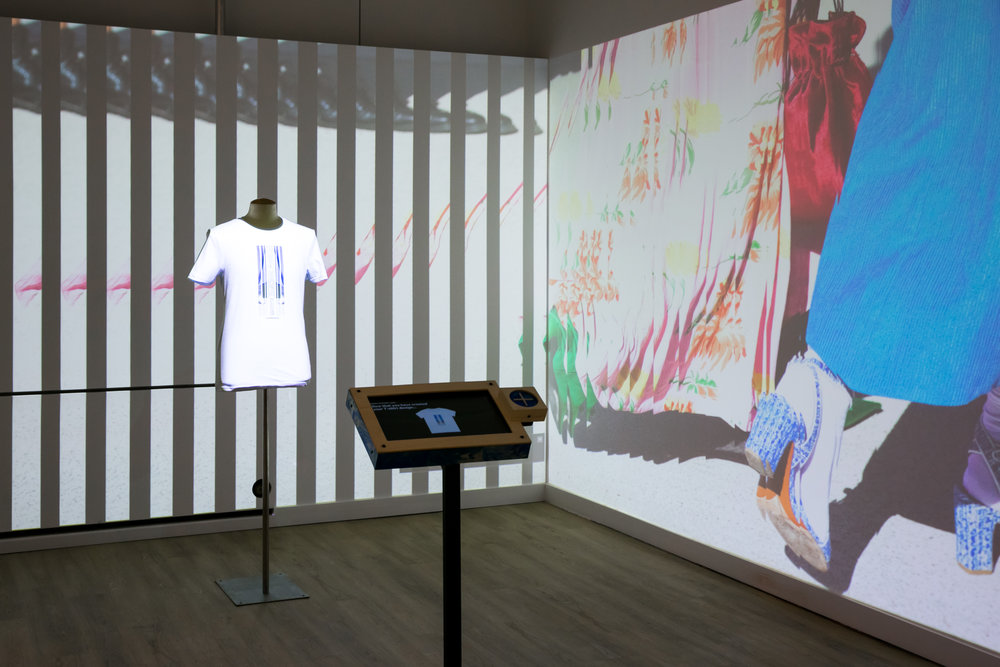
WHEN IT COMES TO CHANGING FASHION FOR THE BETTER, WE AS CONSUMERS HAVE A HUGE ROLE TO PLAY. HOW ADVANCED WOULD YOU SAY THE LOCAL CONSUMER IS IN AMSTERDAM IS WHEN IT COMES TO SUSTAINABLE CONSUMPTION?
There is an appetite for practical action, consumers want to know how they can actively engage to be part of a movement to drive real change. Consumers also play a fundamental role in driving this systemic change. Consumer trends also show that one in three consumers now make their purchasing decisions based on whether a brand is environmentally sound. All of the events, panel discussions, clothing swaps and other activities we organize are well-visited and we receive a lot of good feedback from those attending. A lot of that feedback we integrate in our programming, discuss with the visitors face to face and are used to driving the movement forward. It’s a very inclusive and collaborative group and a very vibrant and exciting space to be leading.
Overall, the Netherlands is one of the frontrunners in this space – both with local brands, circular initiatives, active ecosystem and consumers. A clear hub for circular fashion innovation.
_
FASHION FOR GOOD’S ‘EXPERIENCE’ IS THE WORLD’S FIRST INTERACTIVE MUSEUM FOR SUSTAINABLE FASHION INNOVATION, TELL US A LITTLE ABOUT WHAT MAKES IT SO UNIQUE?
It is the world’s first technology forward museum for sustainable fashion innovation!
The Fashion for Good Experience, a free, interactive, public-facing museum where we inspire, educate and engage people from across the world. Visitors learn about the past, present and future of the fashion industry and with the digitally-enabled Good Fashion Journey and an RFID-bracelet, they can discover and commit to ways that they can make a difference. At the end, they take home a personalised Good Fashion Action Plan, a digital guide filled with tips for extending what they learned in the Experience into their daily lives.
Within the museum sits our next-generation retail space, The Good Shop. Built around a thought-provoking theme which we change every four to six months, the Shop features a curated selection of product collections related to the topic at the time. Themes cover issues facing the industry such as the role of water throughout the supply chain, traceability and transparency, and dyeing and colouring — which accounts for 20% of global water pollution. We host workshops, documentary screenings and lectures around each theme to educate, empower and equip visitors to incorporate Good Fashion thinking into their lives and join our global movement.
_
WHAT HAVE BEEN SOME OF THE REACTIONS YOU’VE SEEN FROM THOSE VISITING THE EXHIBITIONS? AND, WHO DO YOU FIND IS COMING THROUGH?
Everybody is welcome. We are open 7 days a week, free of entry on purpose – to make our Experience as accessible as possible, because we cannot change an industry on our own. We need to work together to make all fashion good! The Experience is mainly Dutch and English, but we have hosts available for questions and they speak multiple languages as well. We also do dedicated tours to small groups, schools and universities. We receive a wide range of visitors, tourists, locals, young and old people and we try to offer knowledge and inspire everyone and anyone on different levels, so we can all keep on learning, developing and keep driving this movement forward.
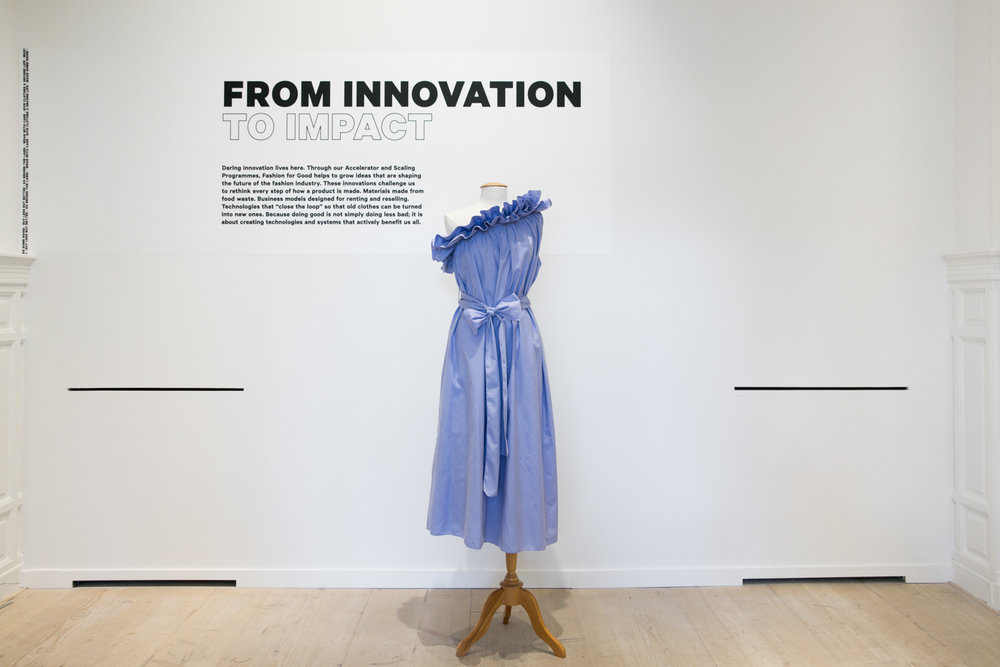
WHAT’S NEXT FOR FASHION FOR GOOD?
Fashion for Good will continue to pioneer collaborative innovations along the fashion value chain, bringing together our corporate partners with Innovators from our Programmes and key players within the fashion ecosystem to scale disruptive solutions that have the potential to revolutionise the Fashion Industry. We expand our geographical reach with our Innovation Platform (see example South Asia).
Also , for the visitor facing Experience; we would love to have traveling initiatives for sure, but for now we are focusing on our Good Fashion Plan that visitors can create and take home to help them change their hearts and minds.
_
WHERE CAN WE FIND OUT MORE?
Fashion for Good regularly hosts public events in their hub in Amsterdam to help inform, empower and educate the public and industry professionals about the challenges and developments within the fashion industry.
We’re always looking for interesting experts, movers-&-shakers and key figures to speak at our events and for innovative, sustainable brands to feature in our Good Shop. Sign up to our newsletter to stay up to date on all our activities and events. Innovators can apply to our Programmes through the website.
Follow the links above for more information, or get in contact through email at info@fashionforgood.com , and follow the Fashion for Good story on Twitter: @FashionforGood, Instagram: @fashionforgood, and Facebook: FashionForGoodGlobal
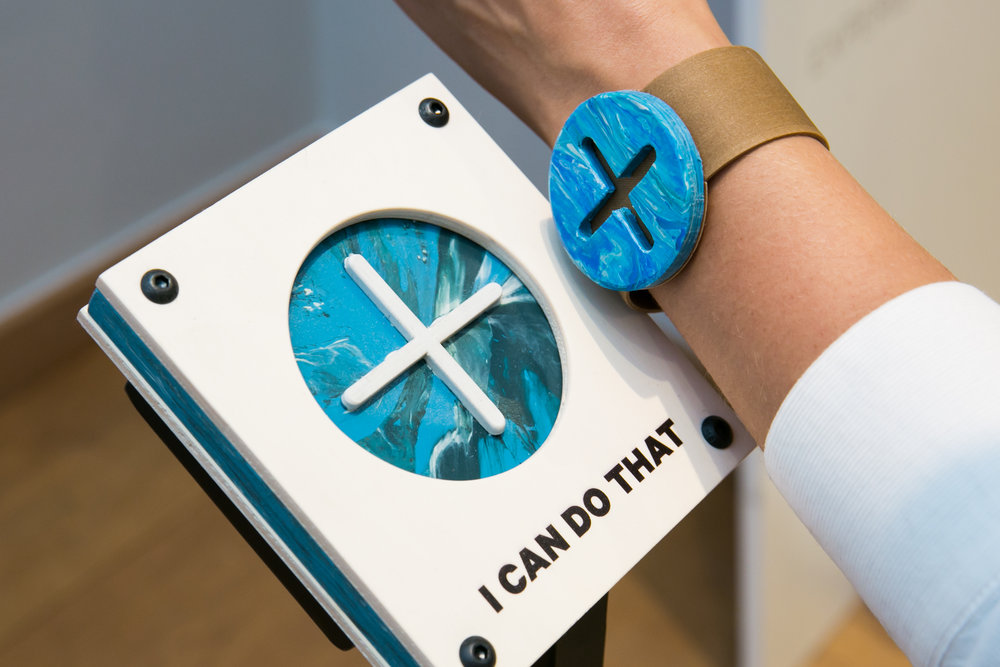
Images provided by Fashion for Good.
[i]https://books.google.nl/books?id=2STRDAAAQBAJ&pg=PA75&dq=spandex+Shivers&hl=en&sa=X&redir_esc=y#v=onepage&q=spandex%20Shivers&f=false
[ii]https://www.sciencedirect.com/science/article/pii/B9781845699314000040?via%3Dihub
© 2024 AUSTRALIAN FASHION COUNCIL All Rights Reserved